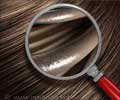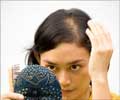Going bald? Not to worry. Don’t have to go after quacks either. A team of researchers in Pennsylvania say it is possible to regenerate damaged hair follicles. And they have successfully created new hair cells in mice.
Writing in the journal Nature, they say hair growth can actually be encouraged using a single gene. The human head comes equipped with 100,000 tiny hair follicles, from each of which grows a single hair.These follicles are produced by the embryo in the first stages of pregnancy, and it was thought that no further replacement follicles could be produced during life.
The Pennsylvania team found that a particular gene important in wound healing, called wnt, appeared to play a role in the production of new hair follicles.
In its experiment, small sections of the outer skin layer, or epidermis, were removed from mice. Just this act appeared to awaken stem cell activity in the area, the scientists said, which included the production of a number of hair follicles.
If the action of the wnt gene was blocked, no hair follicles were produced; but if it was boosted, then many more hair follicles were produced, with the skin layer eventually being indistinguishable from surrounding areas.
The researchers said that their findings "opened a window" for new treatments not only for baldness, but for other aspects of wound healing and regeneration. British expert Professor Des Tobin, from the University of Bradford, said:
Advertisement
"Now this shows convincingly that under the conditions peculiar to the wound-healing environment, the highly complex hair follicle can be created anew from apparently unremarkable cells of the healing epidermis and its underlying dermis."
Advertisement
Source-Medindia
GPL/B











